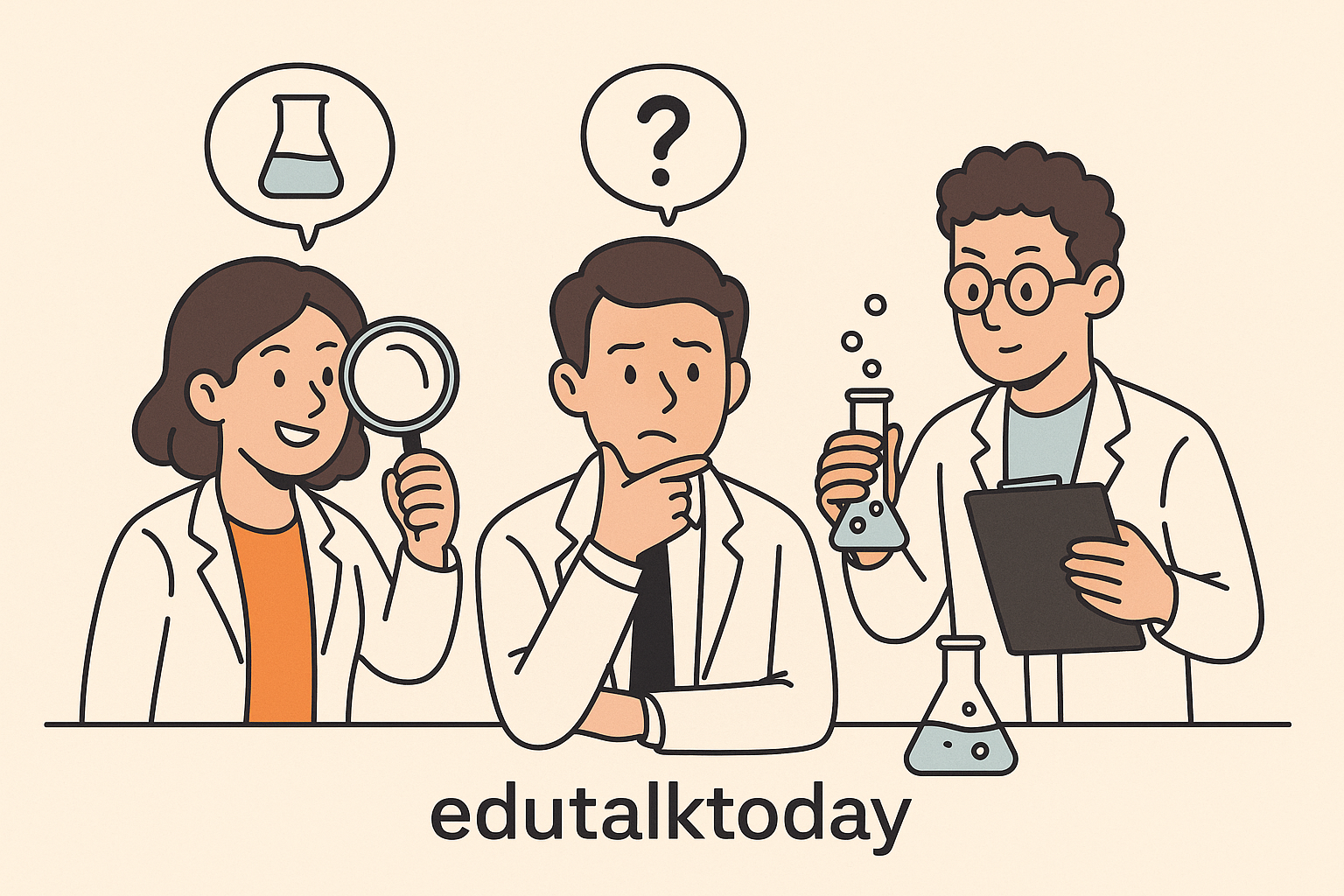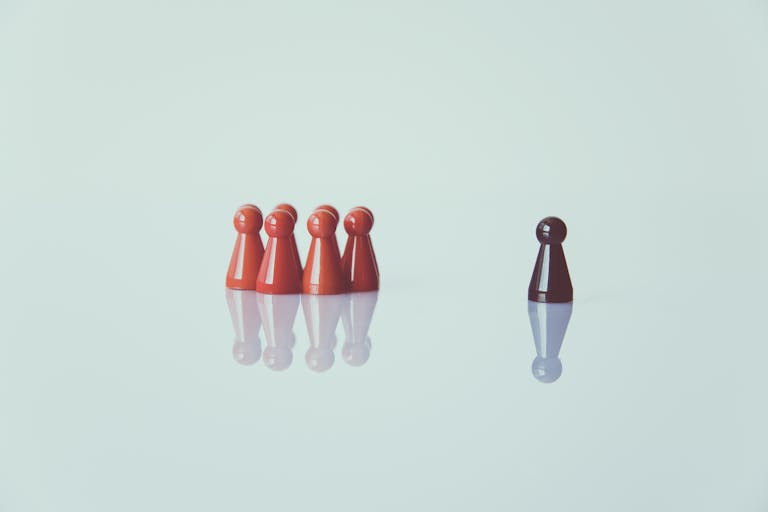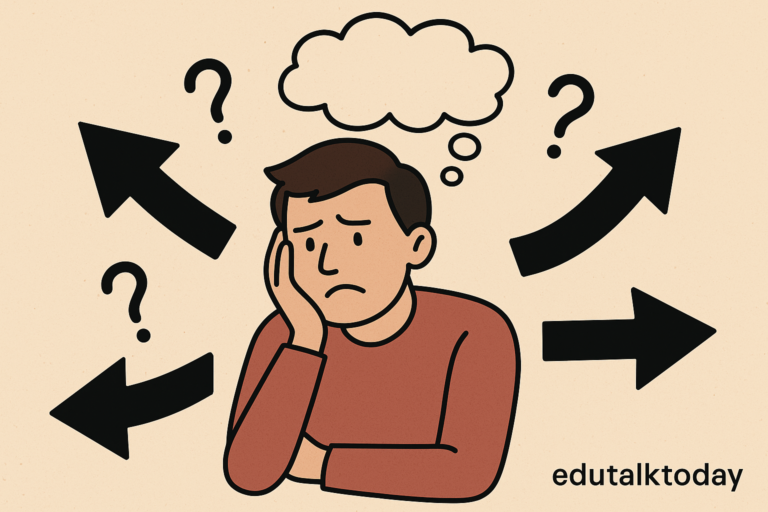What Makes Science “Science” | Simplified for Beginners

We all learned it in school: observe, hypothesize, experiment, revise. Neat, clean, logical. But when I started comparing that version to how actual research unfolds—especially in messy, real-world labs or field studies—it started to feel more like a fairytale than a workflow.
This blog isn’t just going to rehash the usual definition. I’m aiming to dig into something deeper: why this tidy “method” became so influential, even if it’s not how science actually works most of the time. And maybe more importantly, why it’s still useful—even when it’s wrong.
We’re going to look at where the scientific method came from, how it’s evolved, how it stacks up against other ways of knowing, and why it’s still the best tool we have (even with all its flaws). If you’ve ever wondered whether we’re romanticizing science a bit too much—you’re in the right place.
The Textbook Method vs. How Science Actually Happens
Let’s start with the elephant in the lab: the version of the scientific method we all teach is kind of a myth.
I’m not saying it’s useless—it’s a great teaching tool. But the idea that science always follows a clean, step-by-step path from observation to hypothesis to controlled experiment to elegant conclusion? That’s just not how it plays out in real research environments. And honestly, it never really did.
Science as It’s Taught vs. Science as It’s Lived
Think about what happens in an astrophysics lab or during a large-scale epidemiological study. In real practice, scientists often start with a model, not an observation—especially in theoretical fields. Observation might come after the hypothesis. Other times, a huge volume of messy observational data gets analyzed before a formal hypothesis is ever articulated.
Even in controlled lab experiments, things get nonlinear. Unexpected results pop up. Equipment malfunctions. Assumptions get challenged mid-way. Revisions aren’t the last step—they happen constantly.
Kuhn and the Myth of Method
Back in 1962, Thomas Kuhn famously tore into this “scientific method” narrative in The Structure of Scientific Revolutions. He argued that science doesn’t progress by accumulating facts in a linear way, but through paradigm shifts—big, disruptive changes in the frameworks we use to interpret the world.
For example, Newtonian physics was once seen as the ultimate truth. But then Einstein came along and—without invalidating Newton—reframed our entire understanding of space, time, and gravity. That didn’t happen because of some clean hypothesis-experiment-conclusion loop. It happened because someone questioned the underlying assumptions of the existing model.
Kuhn showed us that normal science works within paradigms, but those paradigms eventually break when anomalies pile up—and that’s when real scientific change happens. None of this fits neatly into the schoolbook version of the method.
Feyerabend – “Anything Goes” (Sort Of)
And then there’s Paul Feyerabend, who basically threw a Molotov cocktail into the whole discussion with his claim that “the only principle that does not inhibit progress is: anything goes.”
Now, he wasn’t saying we should abandon rigor or logic. What he was pushing back against was the idea that there’s a fixed method that all science must follow. He pointed to examples like Galileo, who used rhetorical tricks and philosophical sleight of hand to push ideas that weren’t technically “proven” at the time.
Feyerabend’s real point was this: creativity, opportunism, and even chaos play bigger roles in scientific discovery than we like to admit. And yet, we still hold up the scientific method like it’s this sacred algorithm for truth.
Historical Case Study – Mendel and Genetics
Gregor Mendel is often cited as a perfect example of the scientific method in action. But if you go back and look closely, his experiments on pea plants weren’t exactly what modern statisticians would call “rigorous.” There’s actually a whole debate over whether his data was “too good”—possibly even massaged to fit the model.
And yet, he stumbled onto the foundations of modern genetics. His success didn’t come from following the method perfectly. It came from pattern recognition, clever design, and a bit of luck. And that’s the story we rarely tell.
So What’s Really Going On?
When you zoom out, you start to see that science isn’t a method—it’s a culture, or maybe even an evolving social practice. It values transparency, self-correction, skepticism, and collective validation. The method we teach is a proxy for that culture. It’s not wrong—just radically incomplete.
And understanding that difference? That’s where things get really interesting.
Why the Method Still Works (Even If It’s Not Entirely True)
So after dismantling the textbook version of the scientific method, you might wonder: Why does it still matter? Why do we keep teaching and using it if it doesn’t fully match how science actually happens?
Here’s the thing—the simplified method may be inaccurate, but it’s incredibly effective as a scaffold. It’s not a literal map of how discovery works; it’s more like a compass. It doesn’t tell you exactly what route to take, but it points in a generally reliable direction.
And when you zoom out far enough, you realize it’s not about the method being “true.” It’s about what it enables: reproducibility, transparency, and progress.
Let me break down why this flawed-but-functional approach still dominates scientific culture—and how it gets reinforced by the institutions that surround it.
1. It Anchors Reproducibility (Even When Replication Fails)
Reproducibility is often called the “gold standard” in science, and for good reason. It’s our best defense against bias, error, and pseudoscience. But here’s the kicker: in practice, replication often fails. Psychology, medicine, and economics have all had major replication crises. And yet we still uphold the method that’s supposed to guarantee reproducibility. Why?
Because it’s not the outcome we’re preserving—it’s the principle. The method is a ritual that encodes our shared commitment to testability. Even when it doesn’t lead to perfect reproducibility, it builds a culture of accountability.
It also gives us something to fall back on when results don’t pan out: Was the hypothesis testable? Was the experiment controlled? Can it be repeated? Those questions are all method-rooted, even if the method isn’t mechanically followed.
2. Falsifiability Still Filters the Nonsense
Karl Popper’s falsifiability criterion has taken its hits—especially in fields where black swan events and probabilistic models dominate—but it still does useful epistemic work.
Why? Because it forces scientists to build models that risk being wrong. That sounds simple, but it’s huge. In a world full of beliefs, myths, and speculative ideas, falsifiability keeps us grounded. It demands that we expose our theories to possible failure. Not because that always happens, but because we’re signaling that we’re willing to be proven wrong.
No matter how flexible or complex our actual practice becomes, we still cling to that Popperian impulse—and rightly so.
3. It Aligns With the Incentive Structures of Science
Here’s where it gets practical. The method maps very nicely onto how science is funded, published, and reviewed.
- Grant proposals need a testable hypothesis.
- Peer-reviewed papers require a methods section.
- IRBs and ethics boards look for controlled variables, repeatable steps, clear endpoints.
You might not follow the full method in practice, but you write like you did. Because that’s what the system rewards.
It’s not just a matter of tradition—it’s infrastructure. Science runs on a method not just because it’s philosophically sound, but because it’s bureaucratically compatible.
4. It Trains Minds to Think in Structured, Skeptical Ways
We underestimate how powerful it is to give a young scientist—even a high school student—a basic roadmap for testing claims. Even if it’s clunky, it instills the idea that knowledge is provisional, not permanent.
It also gives researchers a shared language. Whether you’re in a physics lab at CERN or a marine biology field station, you’re working from the same rough script. That interoperability matters more than we give it credit for.
What Science Isn’t—A Reality Check with Other Ways of Knowing
Now that we’ve looked at how science works (and kinda doesn’t), it’s worth zooming out and asking: What makes science different from other ways we’ve tried to understand the world? Because let’s be honest, science isn’t the only game in town—just the most successful one, so far.
To really appreciate what sets science apart, we need to compare it to other epistemologies. And not in a snobby, “science wins!” kind of way—but with curiosity about why those approaches have persisted too.
Here’s a breakdown of some major knowledge systems, how they differ from science, and where the boundaries get fuzzy.
1. Science vs. Authority-Based Knowledge
This one’s pretty old-school. Think religious doctrine, ancient medical systems, even political ideology. These knowledge systems rely heavily on hierarchical trust—the priest, the shaman, the monarch, the “expert.”
Science challenges this by demanding justification over deference. But interestingly, science still depends on a kind of distributed authority. You trust published papers you haven’t replicated. You trust labs you’ve never visited. So the real distinction is this:
Science earns its authority through procedures. Traditional systems grant authority through status.
When science works best, that difference is stark. When it fails—when peer review becomes gatekeeping or citations become status markers—it starts to look more like the systems it replaced.
2. Science vs. Pure Rationalism
Mathematics, logic, and some branches of philosophy don’t rely on empirical input. They start from axioms and reason forward. They’re deductive.
Science, on the other hand, is inductive and empirical. It doesn’t just ask, “Is this logically consistent?” It asks, “Is this consistent with what we observe?”
But these worlds blur. String theory in physics is almost more math than experiment at this point. Behavioral economics uses game theory (rational) but tests predictions (empirical).
So we’re not looking at a wall between science and rationalism. It’s more like a membrane that lets methods bleed through.
3. Science vs. Phenomenology and Lived Experience
Phenomenology, especially in philosophy, is all about direct, subjective experience. What it’s like to be conscious. What pain feels like. How meaning arises.
Science, especially in its experimental form, often strips this away. It seeks generalizable patterns, not the specifics of your inner world.
But that stripping-away isn’t neutral—it’s a choice. The cost of generalizability is individuality. That’s why science has often struggled with complex human experiences like trauma, cultural memory, or mental illness. These are domains where subjective truth can’t be controlled for—it is the data.
4. Science vs. Engineering/Trial-and-Error
Here’s an interesting one. You can build a bridge that works without fully understanding the physics behind it. Trial-and-error, heuristics, and empirical rules can lead to functioning systems—even if the underlying science is patchy or absent.
Science wants understanding. Engineering wants results.
Historically, engineering often came first: the Wright brothers got a plane off the ground before aerodynamic theory fully explained lift.
So in some ways, science lags behind innovation, especially in applied domains. That’s humbling—and important to remember.
5. Science vs. Machine Learning and Data Science
Here’s where things get spicy. Modern ML models can predict outcomes better than some scientific models—and they often can’t tell you why. They’re black boxes. No hypothesis. No mechanistic explanation. Just correlation with insane computational horsepower.
Is that science?
Well… kind of. But it pushes us to ask: Is science about explanation or prediction?
Because if it’s the latter, ML is eating science’s lunch. But if it’s about building conceptual models of the world, science still has the upper hand.
For now.
The Real Secret Sauce—Epistemic Humility and Iterative Objectivity
Let’s put aside the jargon for a second. Here’s what I think science really is at its core:
A system that gets things wrong—on purpose—and keeps trying anyway.
Science isn’t about certainty. It’s about provisional trust in models that survive repeated testing. We don’t believe them because they’re true—we believe them until they’re replaced with something better.
That’s not failure. That’s a feature. And it’s rare in human history.
Objectivity as a Moving Target
People talk about science as “objective,” but let’s be honest—that’s always been a bit of a myth. What we really have is “iterative objectivity.”
- In the 1600s, objectivity meant eliminating bias through personal discipline.
- In the 1800s, it meant using instruments (telescopes, thermometers) to extend the senses.
- Today, it means datasets, algorithms, and peer consensus.
Objectivity evolves with our tools and our culture. And that’s good! Because science doesn’t seek some final, static Truth. It seeks better and better approximations.
The Power of Being Wrong
What makes science unique isn’t just the method—it’s the mindset. Scientists expect to be wrong. Not always, not eagerly—but inherently. Every hypothesis is a dare. Every experiment is a test. Every peer review is a public risk.
You don’t see that mindset often in politics, religion, or even everyday conversation. Most systems punish error. Science absorbs it and turns it into progress.
That’s huge.
When the Method Fails, the Culture Still Carries
Even when our models break or our methods misfire, the culture of science—skepticism, openness, revision—keeps the project alive.
It’s not perfect. It can be hierarchical, conservative, and deeply flawed. But the built-in mechanisms for correction make it unlike any other human endeavor. It’s the only system I know that improves by being embarrassed.
Final Thoughts
So here we are: after all the critiques, contradictions, and philosophical side quests, what’s left of the scientific method?
Honestly?
Something still pretty amazing.
Not because it’s perfect. But because it’s resilient. It gives us just enough structure to keep going—and just enough humility to know we’re never done.
Science isn’t a checklist. It’s a culture, a mindset, and maybe even a bit of an aspiration. The real magic isn’t in the method—it’s in the willingness to be wrong, over and over, in the pursuit of something better.
Thanks for going on this ride with me.
Stay curious.
Stay skeptical.
And above all—keep revising.





